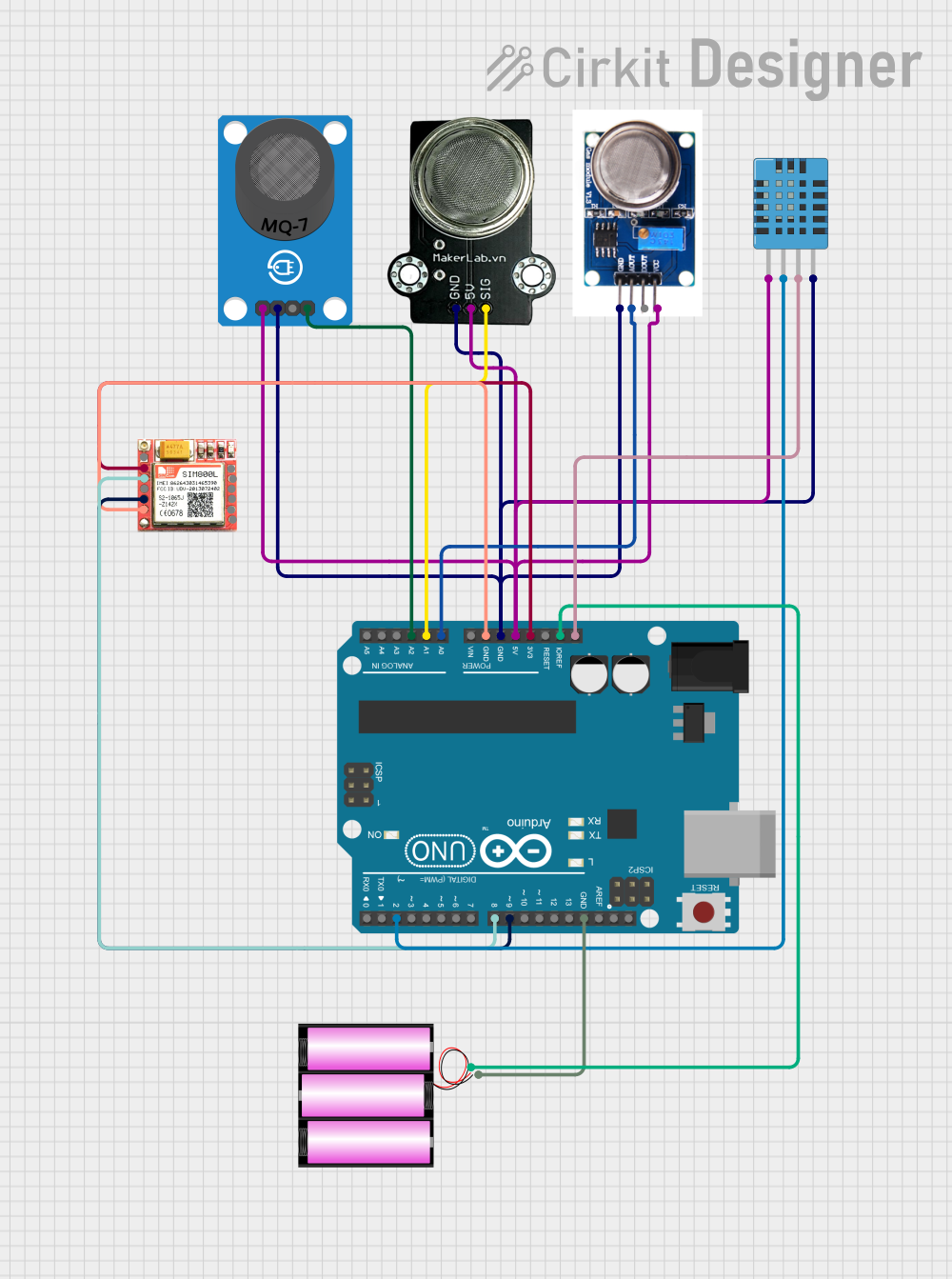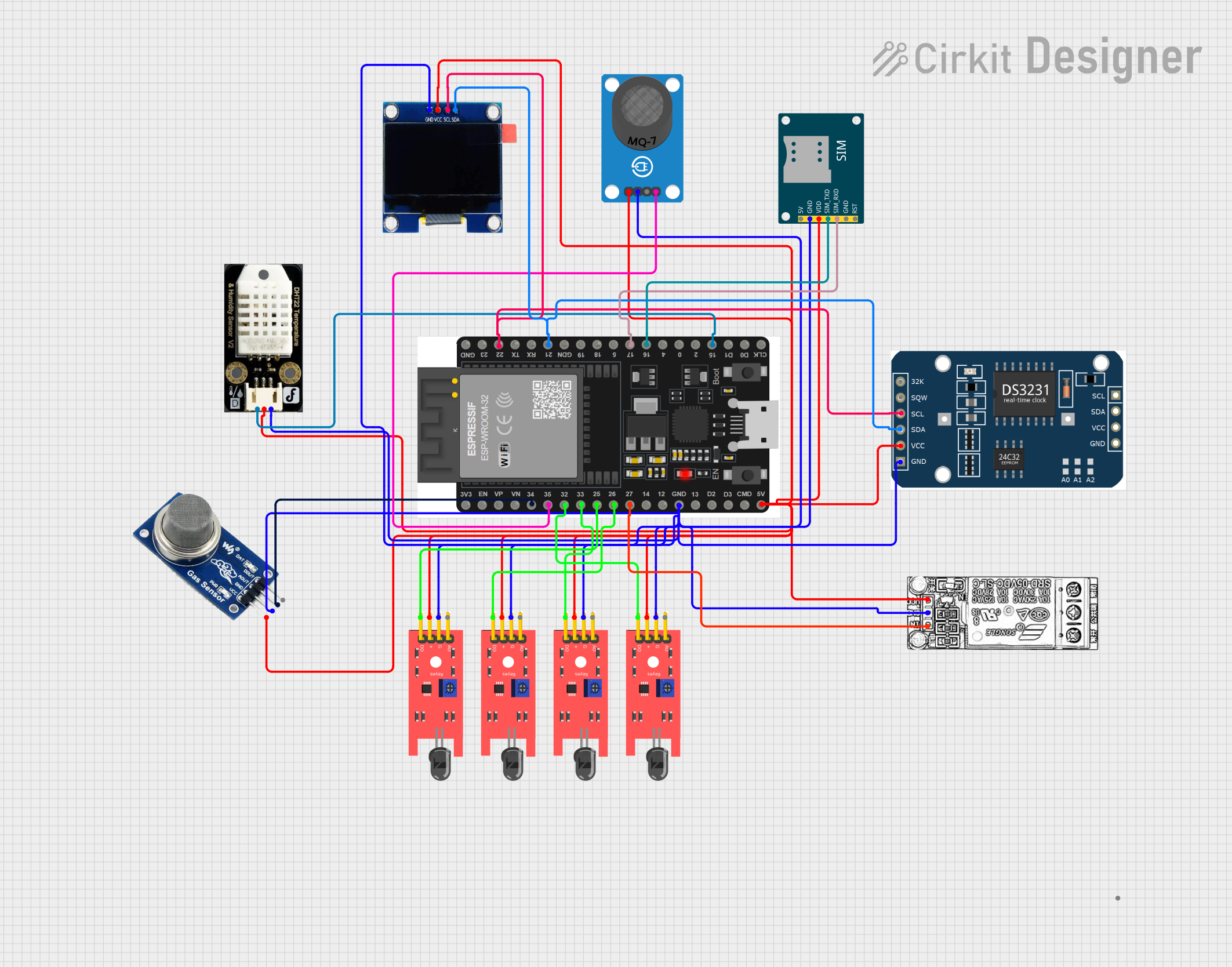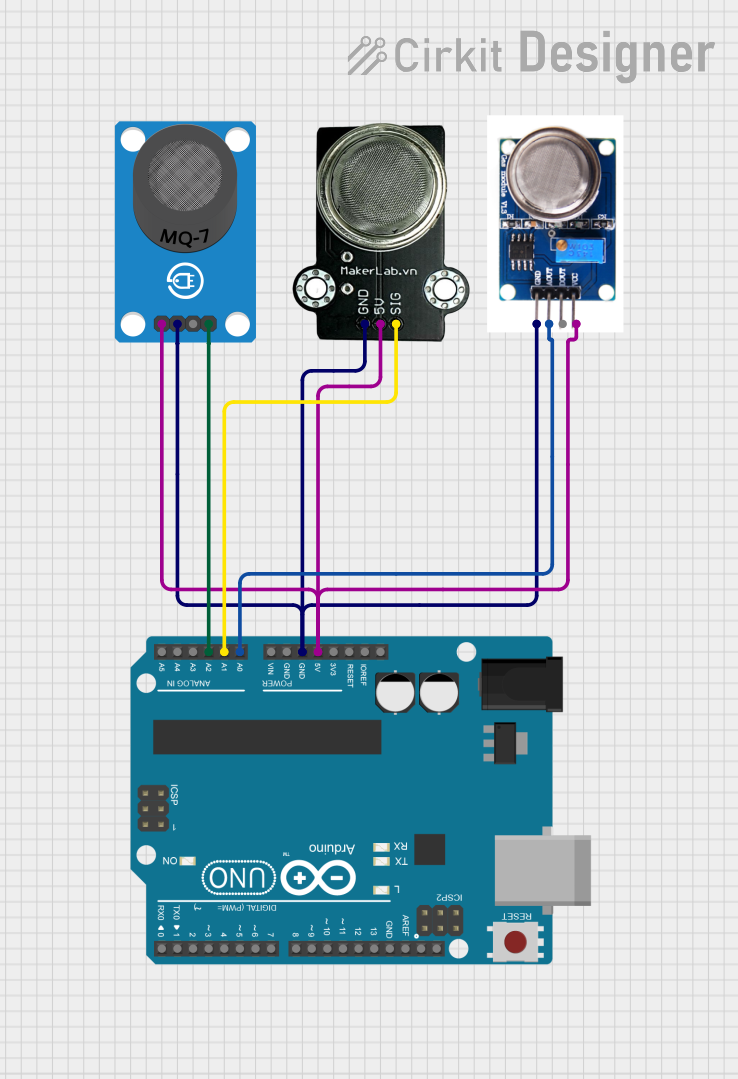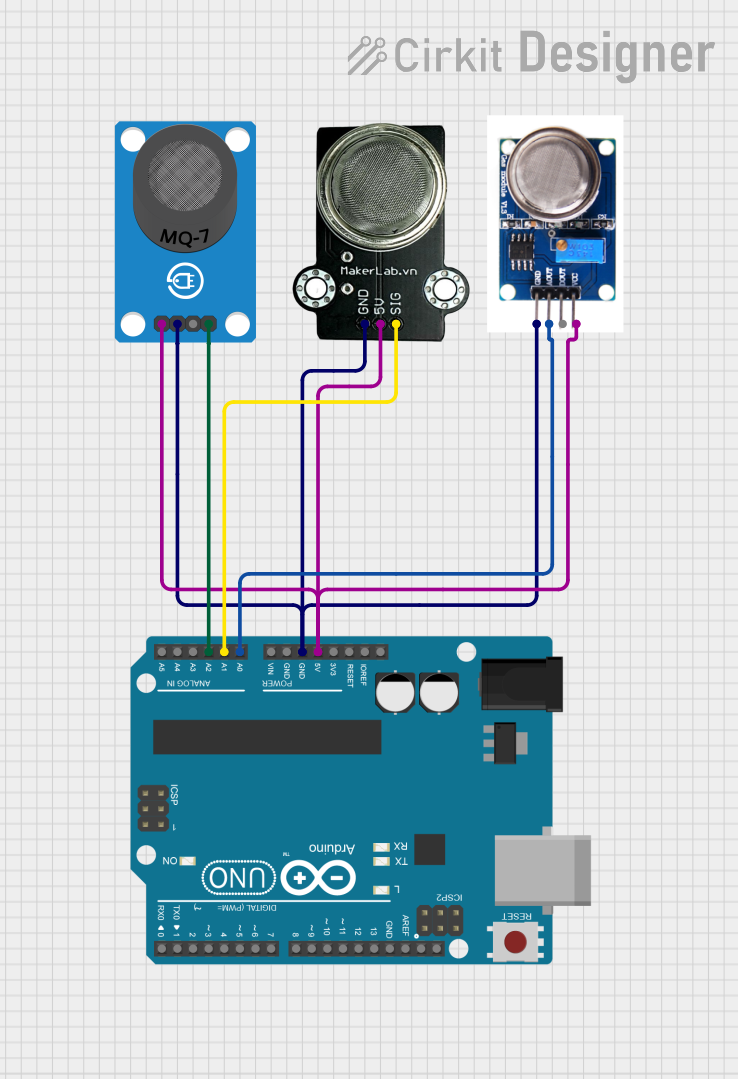
How to Use MQ-7 Breakout: Examples, Pinouts, and Specs

 Design with MQ-7 Breakout in Cirkit Designer
Design with MQ-7 Breakout in Cirkit DesignerIntroduction
The MQ-7 Breakout is a specialized sensor module designed for the detection of carbon monoxide (CO) gas concentration in the air. With its high sensitivity to CO, it is an essential component in various applications, including gas leak detection systems, indoor air quality monitoring, and safety systems in both residential and industrial settings.
Explore Projects Built with MQ-7 Breakout

 Open Project in Cirkit Designer
Open Project in Cirkit Designer
 Open Project in Cirkit Designer
Open Project in Cirkit Designer
 Open Project in Cirkit Designer
Open Project in Cirkit Designer
 Open Project in Cirkit Designer
Open Project in Cirkit DesignerExplore Projects Built with MQ-7 Breakout

 Open Project in Cirkit Designer
Open Project in Cirkit Designer
 Open Project in Cirkit Designer
Open Project in Cirkit Designer
 Open Project in Cirkit Designer
Open Project in Cirkit Designer
 Open Project in Cirkit Designer
Open Project in Cirkit DesignerTechnical Specifications
Key Technical Details
- Sensor Type: Tin Dioxide (SnO2) semiconductor
- Detection Gas: Carbon monoxide (CO)
- Concentration Range: 20 to 2000 ppm CO
- Supply Voltage (Vcc): 5V ± 0.1V DC
- Heater Voltage (VH): 5V (pulse)
- Load Resistance: Adjustable via onboard potentiometer
- Preheat Duration: >48 hours
- Operating Temperature: -10°C to 50°C
- Humidity Range: 95% RH or less (non-condensing)
Pin Configuration and Descriptions
| Pin Number | Pin Name | Description |
|---|---|---|
| 1 | VCC | Power supply (5V) |
| 2 | GND | Ground |
| 3 | DOUT | Digital output (TTL logic level) |
| 4 | AOUT | Analog output (proportional to CO level) |
Usage Instructions
Integration with a Circuit
- Power Supply: Connect the VCC pin to a 5V power source and the GND pin to the ground.
- Analog Output: Connect the AOUT pin to an analog input on your microcontroller to read the CO levels.
- Digital Output: The DOUT pin can be connected to a digital input on your microcontroller. It will output a high (5V) or low (0V) signal based on the CO concentration threshold set by the onboard potentiometer.
Important Considerations and Best Practices
- Calibration: The MQ-7 requires calibration to ensure accurate readings. This should be done in an environment with a known CO concentration.
- Ventilation: Ensure proper ventilation when testing the sensor to prevent harmful CO accumulation.
- Temperature and Humidity: Operate the sensor within the specified temperature and humidity range for optimal performance.
- Safety: As CO is a toxic gas, always follow safety guidelines when working with the sensor.
Example Code for Arduino UNO
// MQ-7 Carbon Monoxide Sensor Example Code
int mq7AnalogPin = A0; // MQ-7 AOUT pin connected to Arduino analog pin A0
int mq7DigitalPin = 2; // MQ-7 DOUT pin connected to Arduino digital pin 2
int sensorValue = 0; // Variable to store the sensor value
void setup() {
Serial.begin(9600); // Initialize serial communication at 9600 baud rate
pinMode(mq7DigitalPin, INPUT); // Set the digital pin as input
}
void loop() {
sensorValue = analogRead(mq7AnalogPin); // Read the analog value from sensor
Serial.print("CO level: ");
Serial.println(sensorValue); // Print the CO level to the serial monitor
// Check the digital pin for threshold trigger
if (digitalRead(mq7DigitalPin) == HIGH) {
// High CO levels - take necessary action
Serial.println("High CO level detected!");
}
delay(1000); // Wait for 1 second before reading again
}
Troubleshooting and FAQs
Common Issues
- Inaccurate Readings: If the sensor provides inconsistent or inaccurate readings, ensure that it has been properly calibrated and that it is operating within the recommended temperature and humidity range.
- No Output Signal: Check the power supply connections and ensure that the sensor is receiving the correct voltage.
- Sensor Not Responding: If the sensor does not respond, it may need more time to preheat. Allow it to operate for at least 48 hours before use.
FAQs
Q: How long does the MQ-7 sensor last? A: The lifespan of the MQ-7 sensor can vary based on usage, but it typically lasts for several years with proper calibration and maintenance.
Q: Can the MQ-7 sensor detect other gases? A: While the MQ-7 is specifically designed for CO detection, it may show some sensitivity to other gases. However, it should not be used as a primary sensor for detecting gases other than carbon monoxide.
Q: Is the MQ-7 sensor suitable for outdoor use? A: The MQ-7 can be used outdoors, but it should be protected from extreme weather conditions and should not be exposed to water or high humidity levels.
For further assistance or technical support, please contact the manufacturer or visit the official product forum.